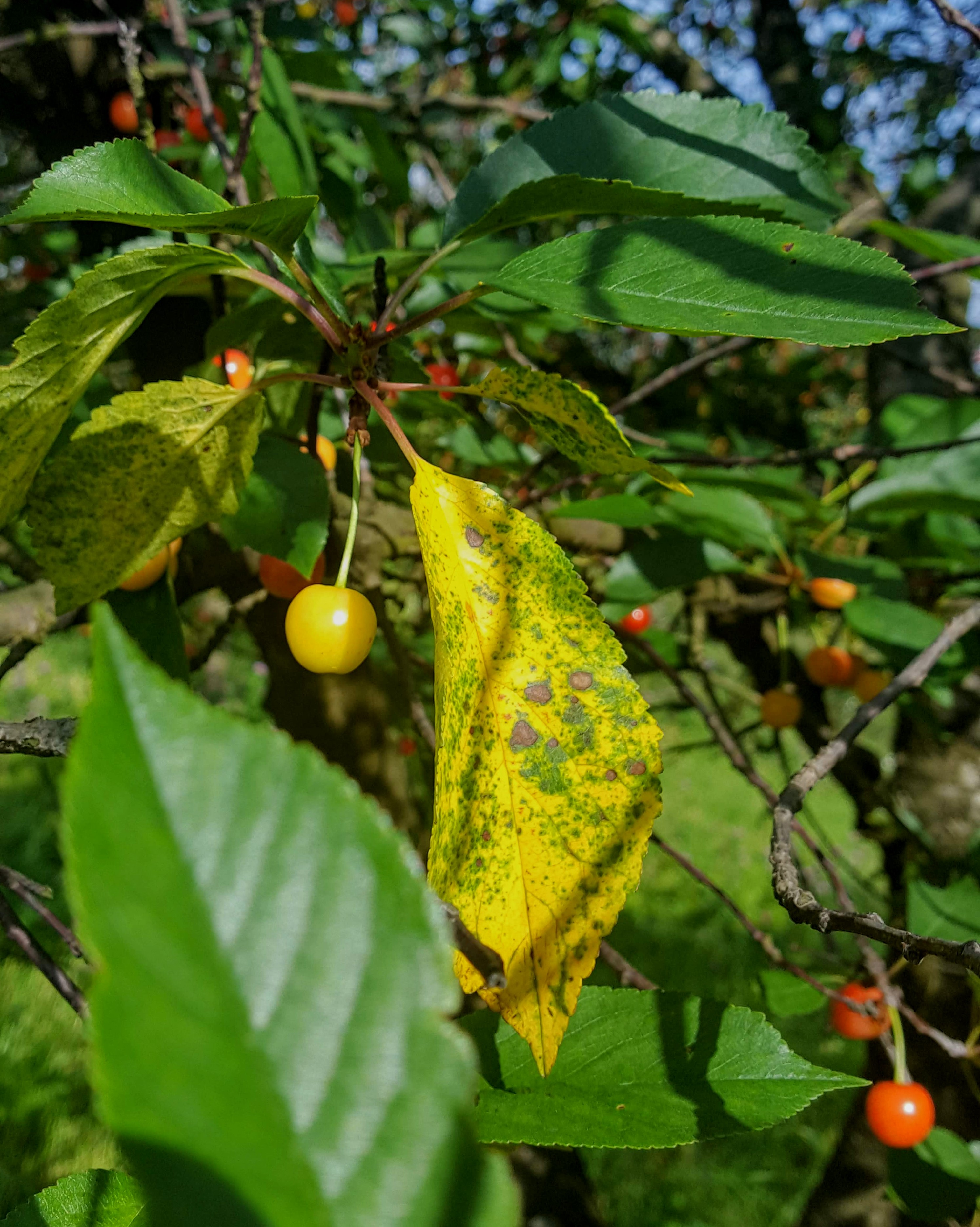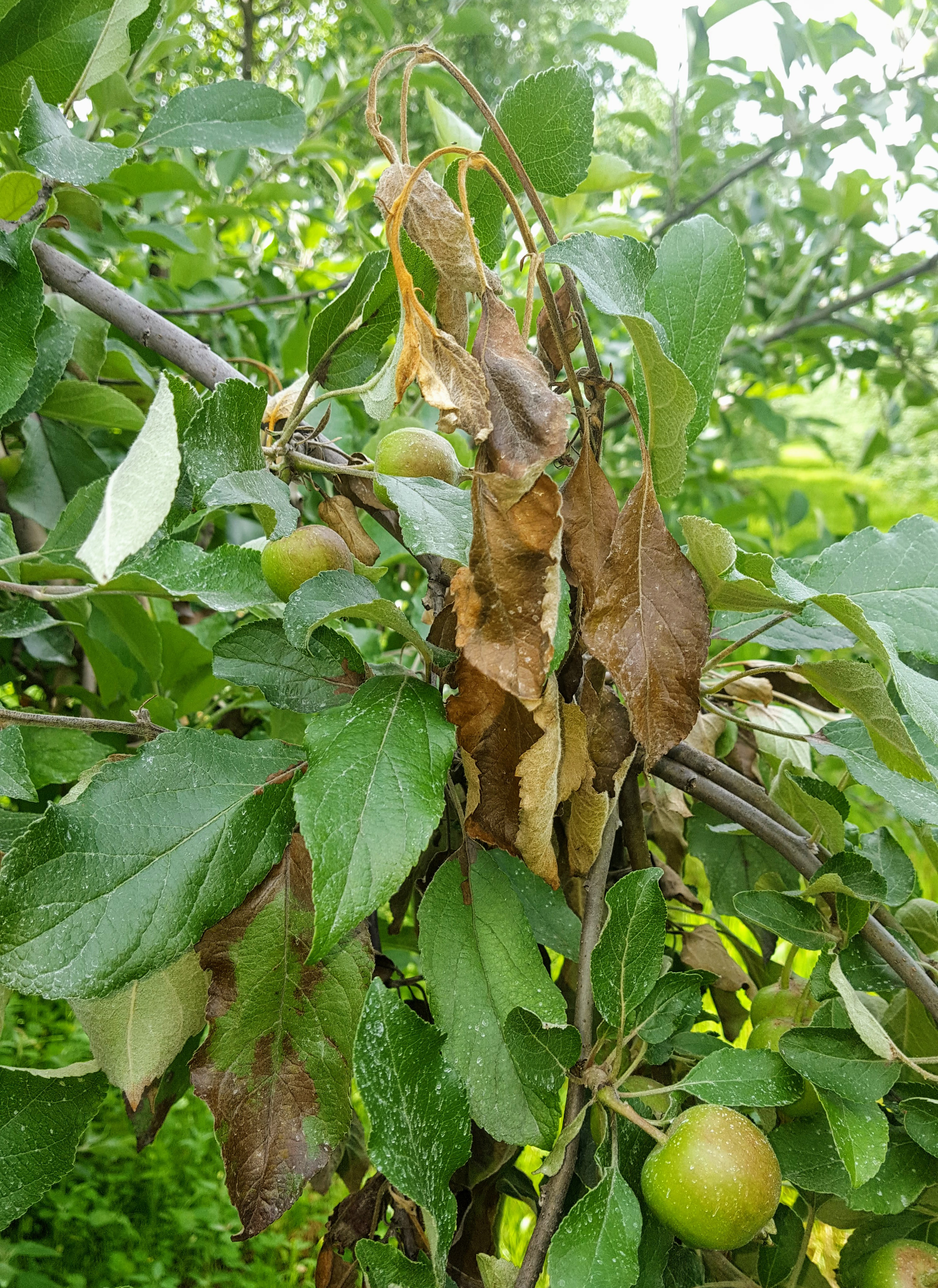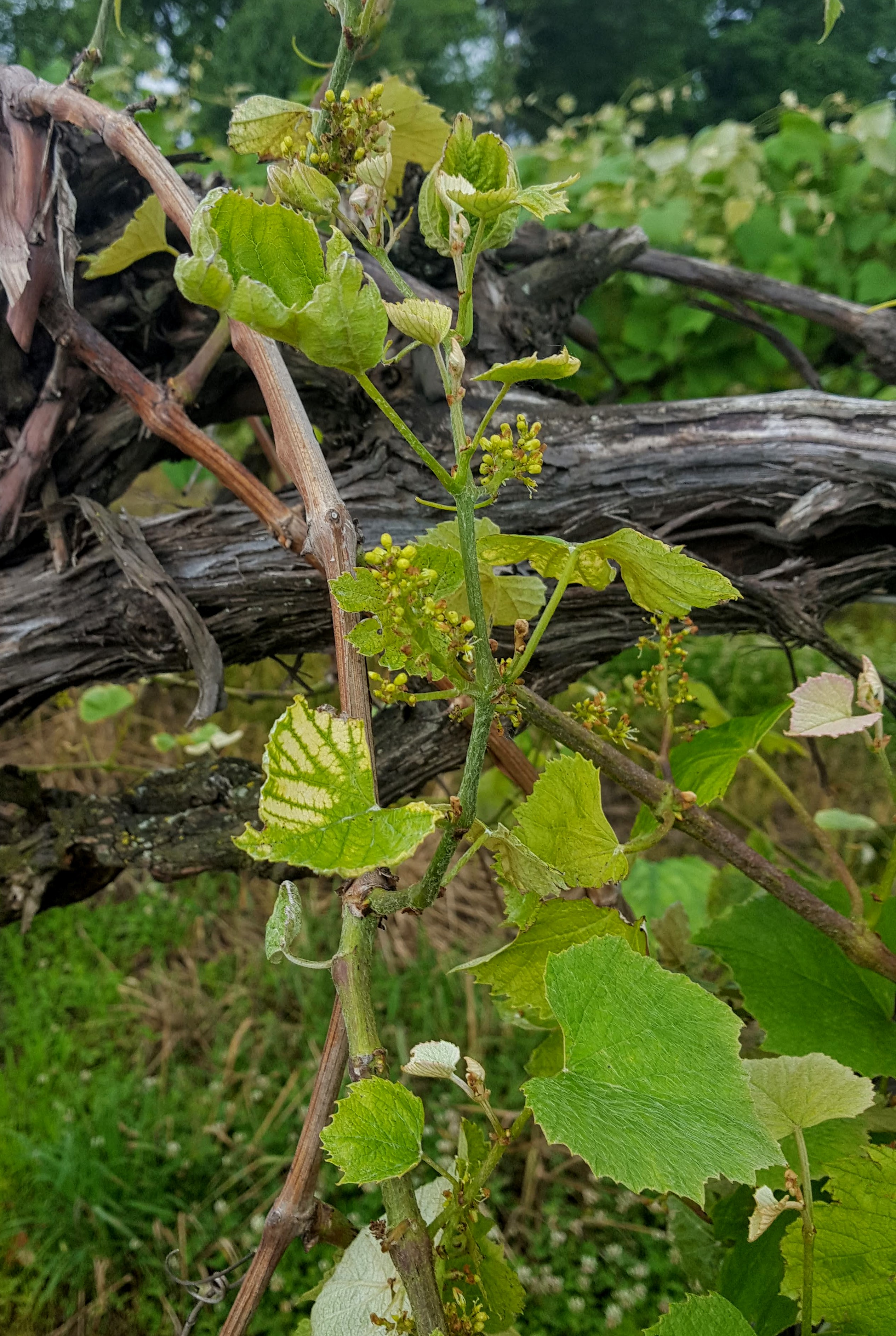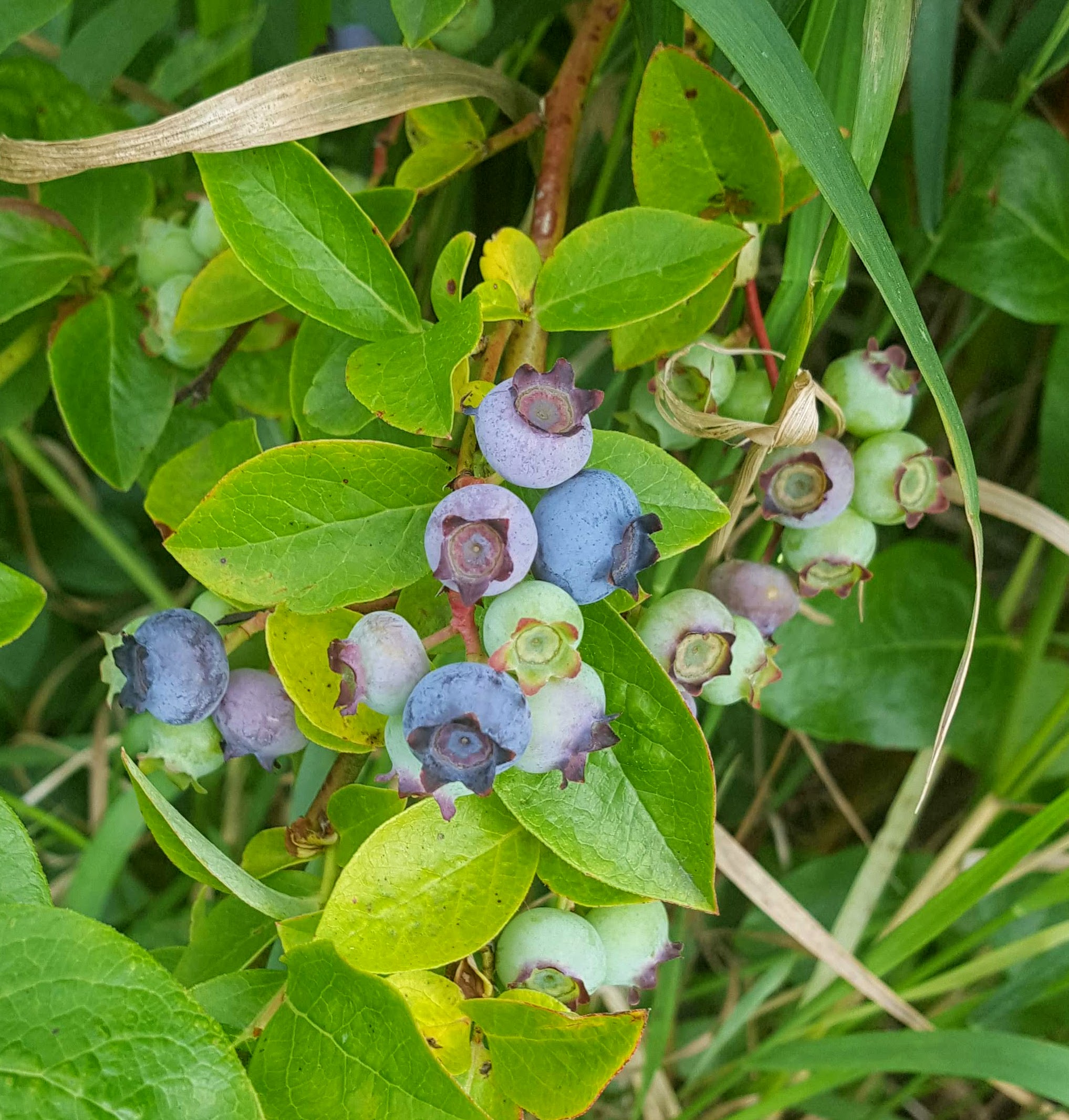Southwest Michigan fruit update – June 25, 2019
Strawberry harvest continues. Grape bloom is ending.

Weather
Last week’s weather was warmer with generally cloudy days. Highs were in the upper 70s, with lows in the 50s and 60s. Storms and heavy rain moved across the region Thursday morning (June 20) bringing one to four inches of rain. Other than some scattered showers, this was the major rain event last week.
Storms moved through the area on Monday with another inch of rain. Precipitation totals for the week ranged from 0.9 to 4.2 inches, with an average of 1.8 inches. Eastern Van Buren and Kalamazoo counties received the most with 3 to 4 inches and local flooding. Rainfall totals for the season range from 12 to 17 inches across the region since April 1. Soils are wet. The forecast for this coming week is for warm conditions, with highs in the 80s and lows in the 60s. There is a chance of showers most of the week. Sandy soils are beginning to dry out, but heavier soils are still very wet. Soil temperatures are in the 60 and 70s. There is standing water in poorly drained fields and wet spots.
With warmer temperatures, we picked up more heat units, about 167 GDD base 42 and 112 GDD base 50. Locations away from Lake Michigan are picking up heat units slightly faster than those close to the Lake.
|
Southwest Michigan GDD Summary from March 1 through June 23, 2019 | |||
|---|---|---|---|
|
Station |
GDD 42 F |
GDD 45 F |
GDD 50 F |
|
1190 |
968 |
658 |
|
|
1237 |
1012 |
697 |
|
|
1060 |
851 |
562 |
|
|
Average for the SW region |
1206 |
984 |
673 |
|
Accumulation last week |
167 |
146 |
112 |
Check out articles and other regional reports at the Fruit News page. No weather report video this week.
Tree fruit
With this season’s abundant rainfall, foliage is lush and cuticles are not well developed. We are seeing many different types of damage from pesticide phytotoxicity on tender foliage and fruit. First catch and biofix for Oriental fruit moth (OFM) was on May 6 at the Trevor Nichols Research Center, and the flight is declining. We expect to see the second generation flight soon.
First trap catch and biofix of obliquebanded leafroller was June 14. The Trevor Nichols Research Complex biofixed male San Jose scale on June 3. Estimated first crawlers are 375 DD51 after biofix, or approximately 757 DD51 after Jan 1. For SWMREC, this is projected to be the end of June.
Controls for San Jose scale should be applied this week. If Movento is used for crawler control, it should be applied at least a week before crawler emergence is expected.
In peach and nectarine trees, shoot flagging due to OFM should start showing up. Winter-damaged trunks and weakened trees are especially attractive to borers. Protecting trunks with insecticide sprays should be done soon. At some locations, peach foliage seems pale as if it is short of nitrogen. We think this is due to the cool growing conditions and the trees will improve with warmer temperatures. Conditions have been generally unfavorable for bacterial spot development and symptoms are not wide spread.

Cherries are ripening. Early sweet cherry harvest has begun. Tart cherries are beginning to turn red. Cherry leaf spot symptoms are becoming easier to find. Cherry leaf spot causes small black spots on the top side of leaves which then yellow and fall.
Check the bottoms of the leaves for the white fruiting bodies of cherry leaf spot. Cherry leaves are always susceptible to leaf spot, so management is needed to maintain a healthy leaf canopy during the entire season. Some of the leaf drop seems to be due to bacterial canker infections. The spots on the leaves are larger and there are no white fruiting bodies. There is not a treatment for bacterial canker this late in the season and the disease will not spread any more, but leaf drop will continue.
Ripening fruit are attractive to spotted wing Drosophila (SWD). We are catching only a few SWD at this time. Normally, cherry fruit flies do not emerge until the end of tart cherry harvest in southwest Michigan. New obliquebanded leafroller larvae are expected in a week or two. Growers may need to apply insecticides to control these insect pests. Tart cherry harvest is estimated to begin about July 8, which is later than normal.
In plums, the crop is light. We are seeing shot holing of the leaves and russeting of the fruit. This may be due to an interaction between our cool wet conditions and fungicide sprays. Young plum fruit and foliage are tender and prone to russeting from captan, especially under cool, slow drying conditions. Plum curculio egg laying should be on the decline, but damage from feeding can still occur. Obliquebanded leafroller and codling moth damage to fruit will be a greater risk toward the end of June as larvae hatch and grow larger.

Apple fruit are growing rapidly and hand thinning is underway. Fruit drop due to chemical and natural causes has been slow due to the cold weather. With this season’s heavy rainfall, shoot and foliage growth has been spectacular. Excessive foliage growth increases the potential for bitter pit for apple varieties prone to this disorder. Include calcium in your cover sprays to increase the calcium levels in fruit. Symptoms of fire blight tracing back to blossom infections are appearing now but currently are few and far between.
At this stage with only a few infections in the orchards cutting out the infection is a good way to go. Cut the shoot about a foot below any visible sign of infection. Leave a stub rather than pruning off cleanly to the next branch. Check out When to prune out fire blight: To prune or not to prune for more information. The light fire blight infection levels are probably due to our cool conditions this spring.
Primary apple scab season is over. Look for scab lesions on the leaves and fruit and decide if you can drop fungicides from their upcoming cover sprays. Unsprayed apples and crabapple show very high levels of scab and these trees are beginning to defoliate. The Enviroweather sooty blotch and flyspeck model indicates that spray applications for these diseases may be necessary as some stations are approaching 240 hours of canopy wetness since petal fall.
Codling moth egg hatch is underway. First catch and biofix for codling moth varied by several weeks across the region. First catch varied from May 17 to May 31. A strong flight began in most sites on May 24, during the warm Memorial Day weekend.
Pear fruit are sizing rapidly and hand thinning is underway. The time of rapid shoot growth with succulent leaves is the primary treatment window for pear psylla. The first generation codling moth is not a problem in hard pears but plum curculio can and will lay eggs in pears.
Small fruit
We are catching only a few spotted wing Drosophila (SWD). We expect counts to increase soon, so growers and scouts should be monitoring this pest. Control for SWD focuses on ripening fruit. Sometimes early season fruit, such as strawberries, early summer raspberries and early season blueberries can be harvested before this pest builds to high numbers. With the late start of the harvest season, growers and scouts should not assume that this pest will pass them by. Monitor with traps early ripening wild fruit near your fruit planting so you have an idea of the local population. Bush honeysuckle and mulberries are ripening and are both good hosts for SWD. You should monitor your fields and wild fruit near your field and be prepared to spray to protect ripening fruit. See: Plan to change when dealing with spotted wing Drosophila.
Grape bloom is ending for most varieties. Post bloom sprays are the most important disease controlling sprays in grapes. Growers need to use materials or a mix of fungicides to control all the fruit diseases, downy mildew, phomopsis, powdery mildew and black rot which can infect new green tissue as it is exposed.
Downy mildew, black rot leaf lesions and phomopsis on the leaves and stems can be found in vineyards now. Having downy mildew in the vineyards this early sets us up for a bad year later in the season when downy mildew can defoliate the vines. Growers should consider using eradicant materials such as Ridomil, Zampro or back-to-back applications of high rates of the phosphite materials such as Phostrol and other products which can kill these lesions.
Tumid grape galls seem to be common this year. This sporadic pest usually causes little real damage so treatment is seldom warranted. Many of the galls already have exit holes, so it is too late to apply a systemic material, to prevent damage from this generation. Our recommendation is to cut out the galls and remove them from the vineyard.

We are also seeing Eutypa symptoms in the vineyards. This is a fungal infection of the trunk or cordon which entered through a pruning wound. Eutypa causes a gradual decline of the vine. Symptoms are normally seen on only part of the vine. Shoots have upward cupped new leaves, while the older leaves often cup downward. Infected cordons and trunks should be removed. See the Eutypa section of E154 - The Michigan Fruit Management Guide on page 176 to see a discussion of this disease.
We are catching grape berry moth. Grape berry moth larvae can be found feeding in the clusters. This first generation causes damage to the clusters but this early in the season the loss is compensated for by later fruit growth. It is the second and third generations which are targeted for control. Bloom in wild grapes is used to set the Grape Berry Moth model on Enviroweather and determine the spray timing for treating the second and third generations. Wild grape bloom began about May 31 in central Berrien County and June 1 in Van Buren County.

Blueberries have green fruit and fruit drop seems to have stopped. The crop is looking better as the fruit sizes. Bluetta berries, one of the earliest varieties, have begun to turn blue. Cherry fruitworm and cranberry fruitworm are both still flying. The warm weather this last week caused a good moth flight. Cherry Fruitworm Biofix for the region was set as June 3. The Cherry fruitworm flight is tapering off in most sites. Cranberry fruitworm GDD biofix was June 14. In many sites there was a strong flight last week of cranberry fruitworm. Growers may need to apply a second application to control this fruit pest.
The disease focus is still on anthracnose as green fruit is susceptible to infection which does not appear until the fruit begins to ripen. Growers should tailor their green fruit fungicide choice to control anthracnose under these wet conditions. We are starting to see shoot collapse, which looks like phomopsis.
Strawberry harvest from conventional matted row plantings continues. The abundant moisture and cool weather making for good size and quality. Cool weather is lengthening the season, allowing smaller fruit to size well as they ripen. Under these wet conditions, be sure to maintain fungicide coverage to reduce fruit rots. This week’s warm weather may bring an end to the season in southwest Michigan after the coming weekend. We have been catching SWD and growers should be trapping for this pest.
Bramble bloom has ended and we have lots of small green fruit. We are starting to see some color in the berries. Primocanes are 12 to 24 inches tall. Orange rust is appearing on black raspberries and blackberries. Infected plants should be removed and destroyed.
Cranberry bloom continues with many open flowers on the beds.
Related articles
- Southwest Michigan fruit update – June 18, 2019
- MSU vineyard IPM scouting report – June 19, 2019
- Plan to change when dealing with spotted wing Drosophila
Crop Specific links:
- Ethephon on cherries
- Scouting for Blossom blight of fire blight in apples
- When to prune out fire blight: To prune or not to prune
- Also see: New video resources in tree fruit pathology from MSU
- Codling moth management options for Michigan apples
- Disease control in grapes critical during and after bloom
- Using the MSU Enviroweather grape berry moth model
- Blueberry Fruitworm Factsheet
- Using degree days to predict pest and crop development in blueberries
- Fruitworm control in blueberries for 2019
- Post-bloom fungicide choices in blueberries
- Michigan BlueberryFacts: Anthracnose Fruit Rot (Ripe Rot) (E3039)



 Print
Print Email
Email
